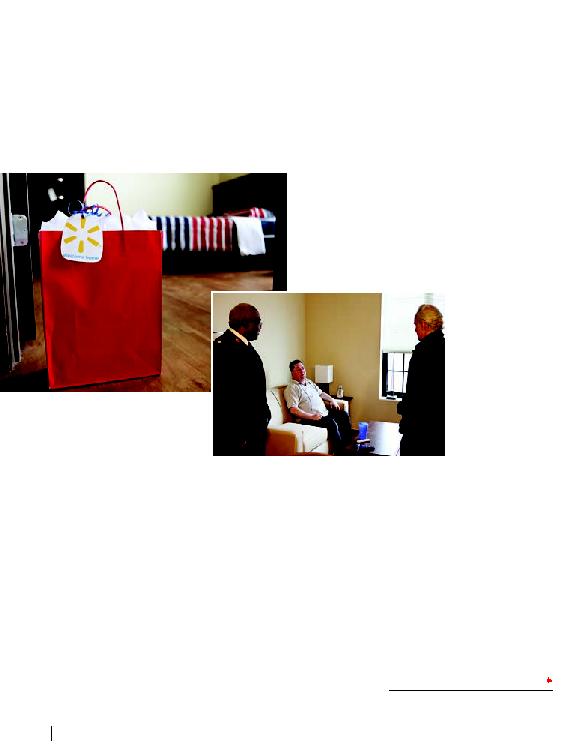
biggest cities across the country
couldn't adequately address. The
duty to serve those individuals be-
came a multi-generational trend.
Nonprofit organizations like The
Salvation Army assumed a bulk of
support services for veterans not
handled by the federal government.
ter, established in 1943, served the
needs of the city's growing population
of homeless vets as well as individu-
als in the area dealing with substance
abuse. The Harbor Light provides
an institutional setting for returning
veterans who suffer from drug addic-
tion, chronic homelessness, alcohol
abuse and mental health issues.
need as they readjust to civilian life.
Wounded soldiers who are unable to
work and require particular health-
care and financial support regularly
fall through cracks in the system.
Fluctuations in the economy since
the Korean War has widened the
chasm between the classes; often
leaving the very people who have
shouldered the burden of our na-
tion's wars unable to reconstruct
Issues such as financial uncertainty
and life on the streets can contrib-
ute to habitual drug use. A recent
study conducted by the Department
of Defense reports that enlisted per-
sons are more likely to abuse pre-
scription opiates and other pain
medications. The Salvation Army,
cial service needs, developed home-
less veterans' services programs
and worked with the U.S. Depart-
ment of Veterans Affairs, which cul-
minated in the Veterans Residence
three years ago.
March, has fully embraced the mis-
sion of the establishment. After six
years of service in the Navy, John
returned home and faced a variety
of struggles that would eventually
leave him homeless. Spiritual sup-
port from The Salvation Army as well
as a variety of volunteering opportu-
nities gave John a new lease on life.
hard times," says John. "I get to meet
so many people here, and making a
difference in their lives while living in
a safe, clean, beautiful home is more
than I could have ever asked for."
just like John. And with the Army
apartments across
from the residence
in March, it is able
to provide even
greater opportuni-
ties for St. Louis'
homeless vets and
others in need. Both
establishments rep-
resent phases one
and two of the Mid-
town Redevelop-
coordinated venture to restore and
rebuild the historic community.
deserve the extra time and care re-
quired to ensure a healthy and ful-
filling life. So much is owed to the
millions of people who committed
such selfless acts to secure our free-
dom. The Salvation Army Veterans
Residence is a testament to the re-
spect, dignity and thanks these in-
dividuals deserve. "We are grateful
and humbled by their service to us,
and we are proud to continue our
service to them for years to come."
ist for the Army's Midland Division.
helps veterans plan for their future and move into their
own homes, ideally within a two�year period.
the residence in 2012 is Lt. Colonel Richardson, divisional
commander, and Phillip Mangano (right), president and
CEO of American Round Table to Abolish Homelessness
and former National Homeless policy Czar under
Presidents George Bush and Barack Obama.